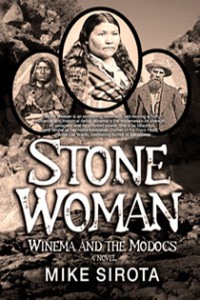Here is some more helpful advice for aspiring novelists. This post first ran in 2014.
We writers tend to fall in love with our words—sometimes too much.
As a writing coach and editor for decades I have been personally responsible for millions of words of unnecessary exposition being excised from my writers’ manuscripts—usually with those writers kicking and screaming. “After all,” each would utter with indignation, “I wrote those words, so they must be good.”
 Tell the truth, I was once among those indignant writers who believed that every one of my words glowed like the top of the Chrysler Building. Fortunately, I learned otherwise. So whenever that issue arose, I would tell my writers that I once cut 90,000 words of unnecessary exposition from one of my manuscripts, and if I can do that, then you can easily cut a few hundred, or a couple of thousand words out.
Tell the truth, I was once among those indignant writers who believed that every one of my words glowed like the top of the Chrysler Building. Fortunately, I learned otherwise. So whenever that issue arose, I would tell my writers that I once cut 90,000 words of unnecessary exposition from one of my manuscripts, and if I can do that, then you can easily cut a few hundred, or a couple of thousand words out.
Wait, what? Is that a misprint? Mike, did you say 90,000 words? Yes, I did. Yo Mikey, that’s longer than most manuscripts! Yes, indeed it is—and I’ll talk more about it shortly.
To me, there is no such thing as “filler.” Every word of your story should matter, whether your manuscript is 70,000, or 90,000, or 125,000 words in length. Every sentence, every paragraph should MOVE THE STORY FORWARD. If not, you’re wasting words—and wasting the readers’ time.
Once upon a midnight dreary I reviewed a manuscript that had countless examples like the one I’m going to share with you. The main protagonist and a couple of secondary characters sit down at a table in a diner to discuss something relevant to the plot. No problem so far. A waitress wearing a nametag that says “Charlene” walks over to take their order. Again, no problem. Then, for three-quarters of a page, maybe three paragraphs, we learn about what part of town Charlene lives in, the extent of her education, her ex-boyfriends, how she came to be stuck in this dead-end job, what her aspirations are, etc. She leaves the table, returns a few minutes later to serve their order—and is never heard from again.
 Extraneous exposition? You bet your sweet bippy. Those 200 or so words did nothing to move the story forward, so out they came. And with many others like it in this manuscript, at least a few thousand more words needed to be cut. At least the writer “got it” and followed the guidelines well.
Extraneous exposition? You bet your sweet bippy. Those 200 or so words did nothing to move the story forward, so out they came. And with many others like it in this manuscript, at least a few thousand more words needed to be cut. At least the writer “got it” and followed the guidelines well.
“MIKE, WILL YOU DO IT?”
I have always preferred to show my writers what to do, rather than do it for them. (See my post, “Give a Writer a Fish…”) But many years ago, after showing a writer what he needed to do to trim his 145,000-word thriller down closer to 100,000 words, he insisted that he was incapable of doing it and asked if I would undertake the task. I warned him that it would involve a great many billable hours. No problem, he said, just do it.
So I took the scalpel to his manuscript, and after about a week I emailed the revised project back to him—over 40,000 words lighter. Read it all the way through, I told him, and then report back. He called a couple of days later to say that he was finished reading. I asked him what he thought. His reply: “I cannot tell what you cut out!” The heart of his story remained, and he was thrilled with the way it now read. Heck, and all I did was trim the fat.

Elmore Leonard
In the immortal words of Elmore Leonard, “When you write, try to leave out the parts that readers tend to skip.”
BUT 90,000 WORDS? YIKES!
My award-winning historical novel, Stone Woman: Winema and the Modocs, was a true “labor of love,” a story that I tinkered with on and off for three decades. Mostly a true story, Stone Woman takes place in mid-nineteenth century America during the period of westward expansion. Its length is a bit over 150,000 words, not unusual for the genre.
In one of its early drafts its length ran over 240,000 words.
If you’re a writer, you probably love research as much as I do. With regard to my story, just about everything I read during the research phase needed to be shared with readers. It took me years to come to my senses.
 Still, 90,000 words out seems almost incomprehensible. So let me explain: Stone Woman takes place almost entirely in California and involves two main protagonists, one already there, the other coming from back east. The latter needed to get to California, and since I loved researching every facet of westward migration in the 1840s and ’50s, I sent that character along the slowest (literary) route possible. Swollen rivers, hostile Indians, treacherous mountains, searing deserts, and so much more I threw in his path—at least 70,000 words worth of adventures.
Still, 90,000 words out seems almost incomprehensible. So let me explain: Stone Woman takes place almost entirely in California and involves two main protagonists, one already there, the other coming from back east. The latter needed to get to California, and since I loved researching every facet of westward migration in the 1840s and ’50s, I sent that character along the slowest (literary) route possible. Swollen rivers, hostile Indians, treacherous mountains, searing deserts, and so much more I threw in his path—at least 70,000 words worth of adventures.
And not one of those words did anything to advance the plot—to move the story forward.
So, when I realized that many important scenes in the story occurred just prior to and after these two characters came together, I knew that those 70,000+ words needed to come out. Was it easy excising them? Hell no.
Was it necessary? Absolutely.
It is difficult to be objective about your own writing; still, you need to be the first line of defense in determining whether a scene serves to move your story forward. If you can’t do this, there are always beta readers, editors, and coaches. But give it a try. With this new awareness, you may surprise yourself.
